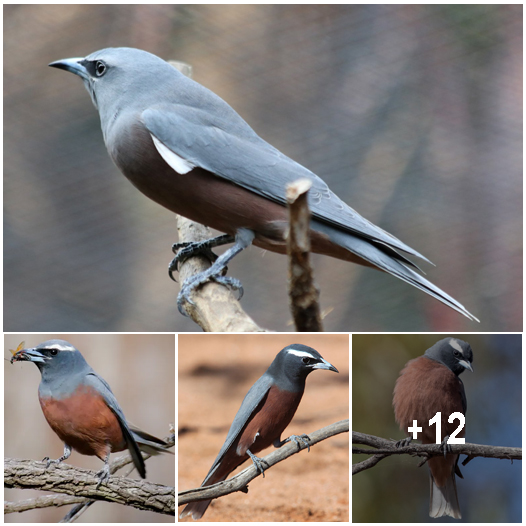There are about 338 different species of hummingbirds – an amazing family of birds found only in the New World. Their ability to hover for extended periods of time and even fly backwards makes them unique in the bird world. What they lack in size, they make up for with energy; the pinnacle of this being the Ruby-throated Hummingbirds incredible ability to flap up to 200 times per second during courtship displays.
1 / 16

Like bats, bees, and other insects, hummingbirds are important pollinators. And with their brilliant colors, rapidly fluttering wings, and rapier-like bills, they fulfill their ecological duties with immense grace and flair. There are more than 300 species of hummingbirds, and more than 60 are either near threatened, vulnerable, endangered, or critically endangered. Here are 15 of the most spectacular hummingbirds in the world. Enjoy!
2 / 16
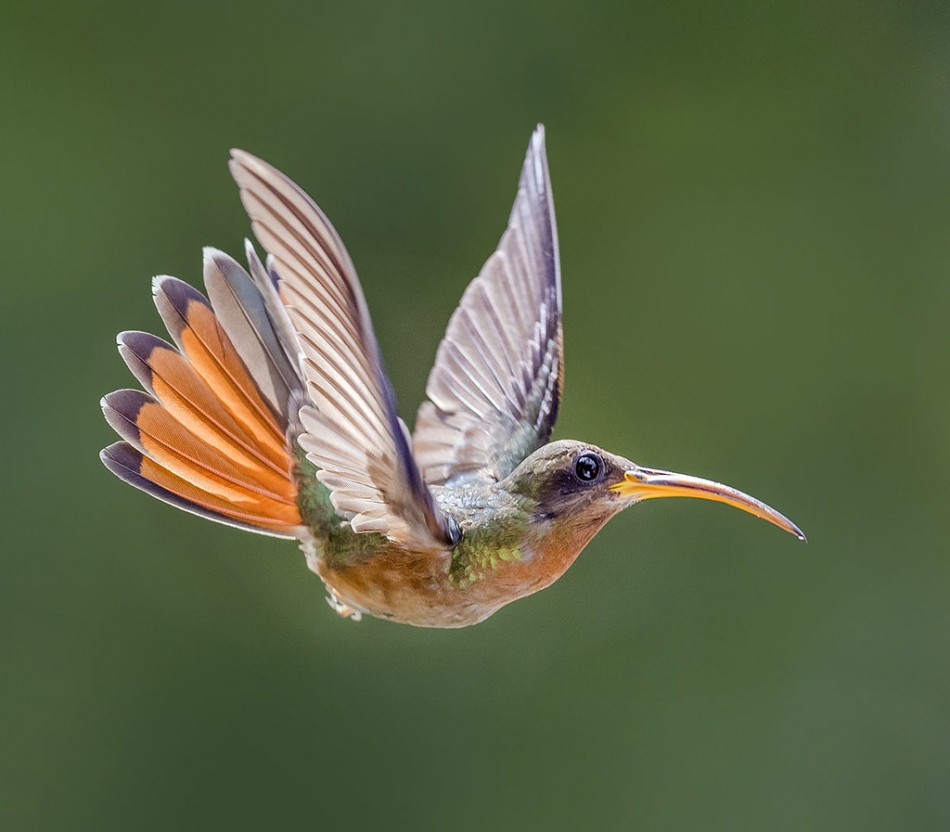
Rufous-Breasted Hummingbird: The rufous-breasted hermit (Glaucis hirsutus), also called a hairy hermit, is a picky eater. It will only feed from flowers whose corolla (the whorl of petals that leads down into the nectaries) length and curvature exactly matches that of its bill. Interestingly, the males and females have differently shaped bills, an evolutionary trait that researchers think cuts down on food-related competition. These birds are bronze-green with undersides that are colored reddish-brown (a color which also happens to be called “rufous”). They have a broad distribution from Panama throughout the Caribbean.
3 / 16
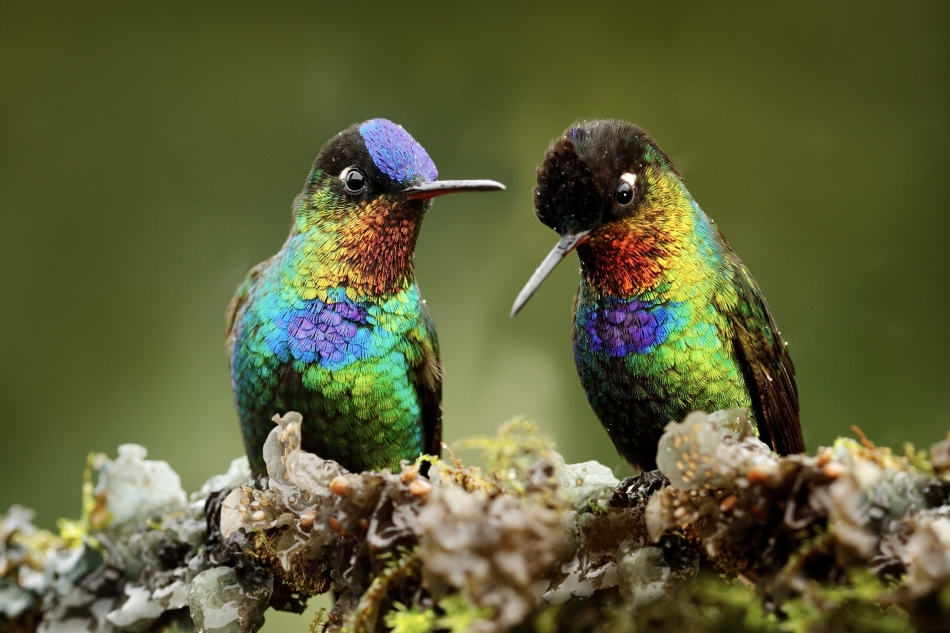
Fiery-throated Hummingbird: This hummingbird is native to the Talamancan montane forests of Costa Rica. The birds are a rainbow of color with a shiny green body, blue tail, brilliant blue crown, yellow-boardered bright orange throat, and violet blue chest patch.
4 / 16
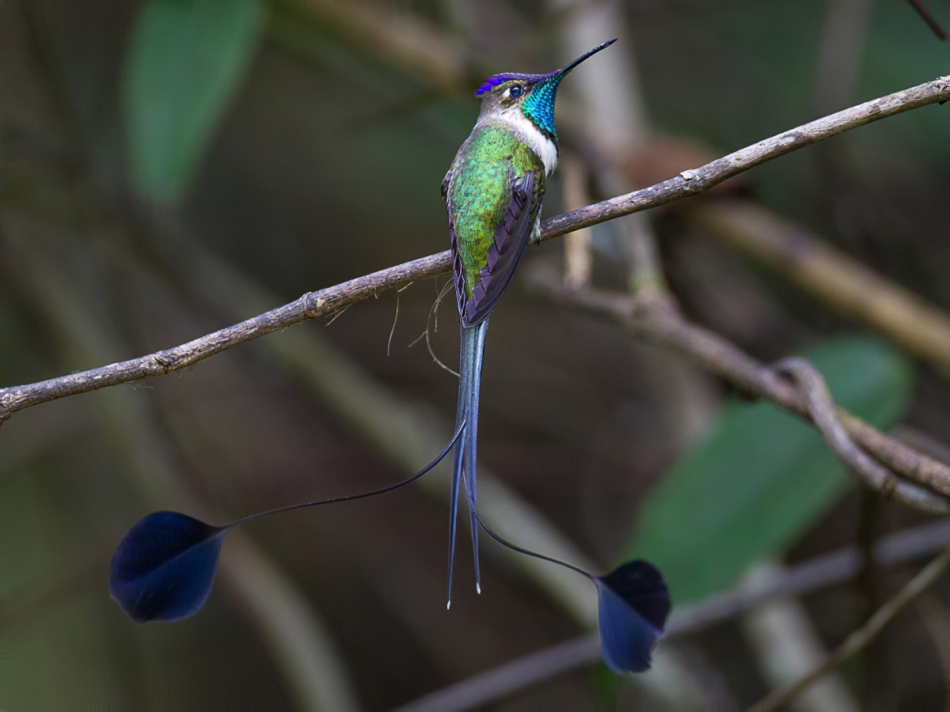
Marvellous Spatuletail: The Marvelous Spatuletail, like many hummingbird species including the Black-eared Fairy and Rainbow-bearded Thornbill, has a name that is both charming and descriptive. This beautiful little hummingbird shines in shades of white, green, and bronze; the male also sports vivid blue crest feathers, a brilliant turquoise gorget, and a black line on its white underparts. The only member of the genus Loddigesia, the species was first described in 1835. It’s only found in the Rio Utcubamba Valley in northern Peru. The Marvelous Spatuletail’s unique tail has only four feathers — which the male uses as a prop in amazing performances.
5 / 16
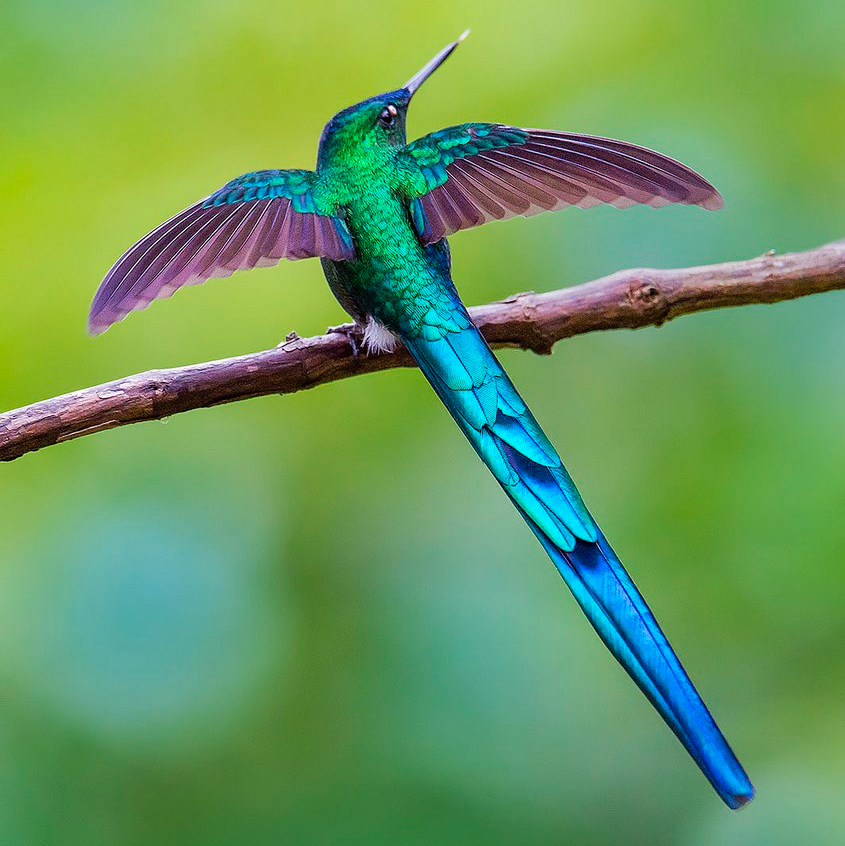
Long-Tailed Sylph: Male long-tailed sylphs (Aglaiocercus kingii) have amazingly long tails, around five inches in length. They are so long that they actually hamper the birds’ flight, requiring males to be especially strong and skilled fliers to survive to breeding age.2 Females choose their mates based on the size of those tail feathers, as they are a symbol of strength and fitness. Males also exhibit a stunning iridescent blue and green coloring. Long-tailed sylphs prefer high elevations. They occur most commonly in the Andes, from Venezuela to Bolivia.
6 / 16

Red-tailed Comet: The Sappho sparganura (scientific name) or red-tailed comet is found not only in woodlands, but also around human habitation in the Central Andes of Argentina and Bolivia. 8.6 inches in length, this bird is easily identifiable because of its tail. It has a long, metallic golden-red tail. The head and wing plumage is moss green, while the upper body is red. Its diet is comprised mainly of nectar taken from brightly coloured and scented flowers. Sometimes they are known to eat insects and spiders. An average clutch-size has 2 eggs which are laid in a nest made by the female alone. Even incubation is carried out by only the female, while the male defends its territory. Its IUCN listing is the LEAST CONCERN.
7 / 16
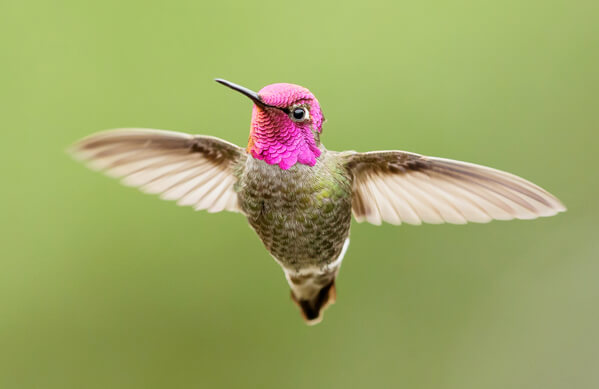
Anna’s Hummingbird: The Anna’s hummingbird, Calypte anna, is a medium to large hummingbird (10 cm; 4 in) that weighs about 2 pennies (4–4.5 g). Its body is greenish-bronze above and grayish-white below. The male’s throat flashes an iridescent rose gorget, and unlike other North American hummingbirds, this rose iridescence also covers his crown. Females may have just a few streaks of throat color.
8 / 16
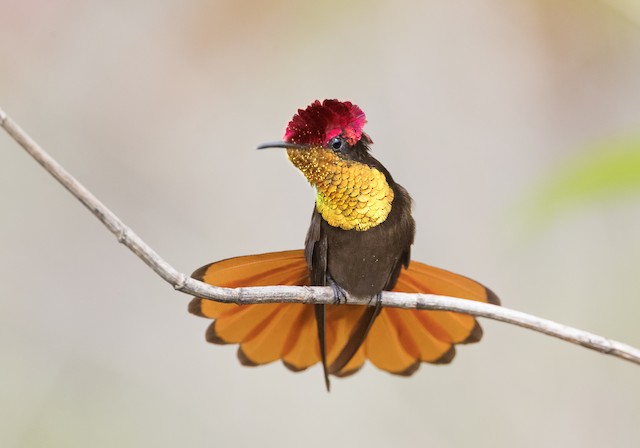
Ruby-Topaz Hummingbird: Although ruby-topaz hummingbirds (Chrysolampis mosquitus) are dainty—weighing only .12 of an ounce—the males can be quite aggressive when defending their territories from competitors. These birds inhabit open country and gardens throughout northern South America, southern Panama, and Trinidad. Males have glossy red crowns and napes and green-glossed brown upper parts, whereas females are a little less colorful and have green throat streaks.
9 / 16
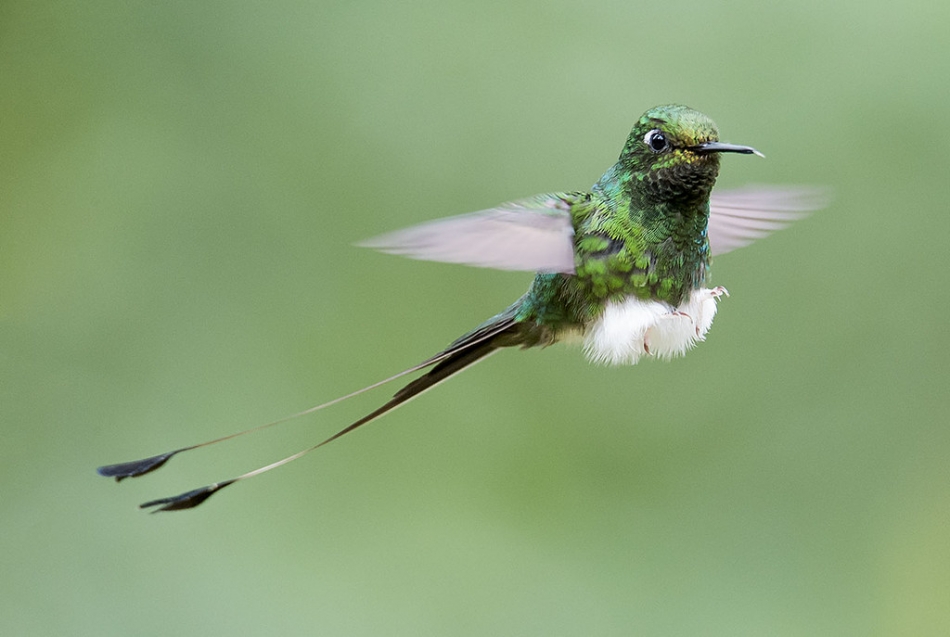
White-Booted Racket-Tail Hummingbird: White-booted racket-tail hummingbirds (Ocreatus underwoodii) are known for their wispy leg puffs—”booties”—and two elongated tail feathers ending in iridescent, racket-like flares. Only males have the latter feature. Because the white-booted racket-tail hummingbird can reach into the long tubular flowers that exclude bees or butterflies from access, many flowering plants in their native South America rely on the species for pollination.
10 / 16
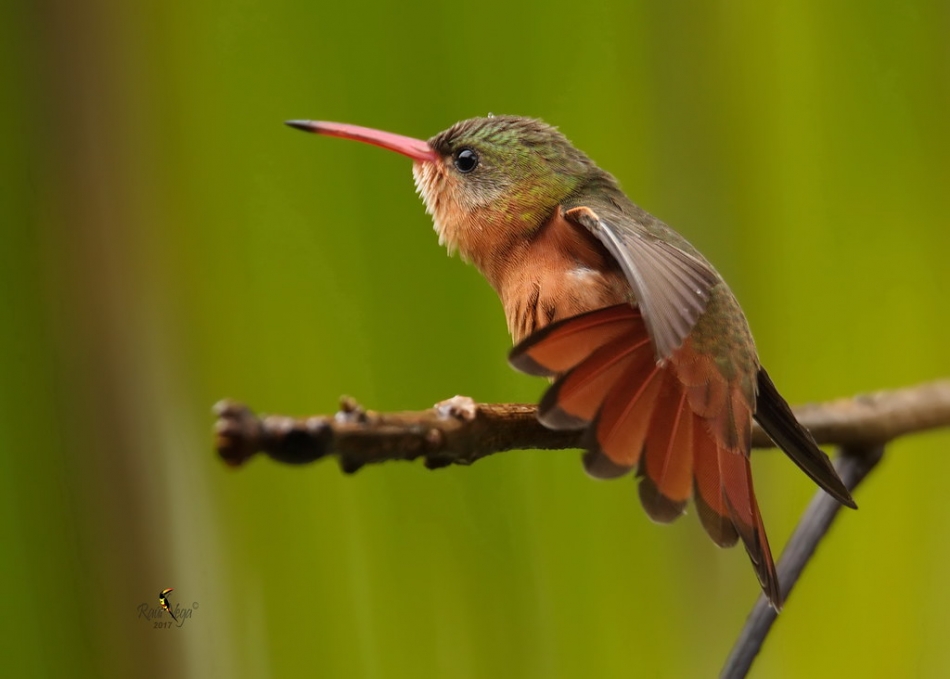
Cinnamon Hummingbird: The cinnamon hummingbird (Amazilia rutila)—clearly named for its color—is a long-winged variation endemic to western Mexico and down to northwestern Costa Rica. It thrives in dry forests, and is sometimes even spotted as far north as Texas and the southwest U.S. Besides its medium-brown underside, the bird can be identified by its dark wings and red, black-tipped bill.
11 / 16
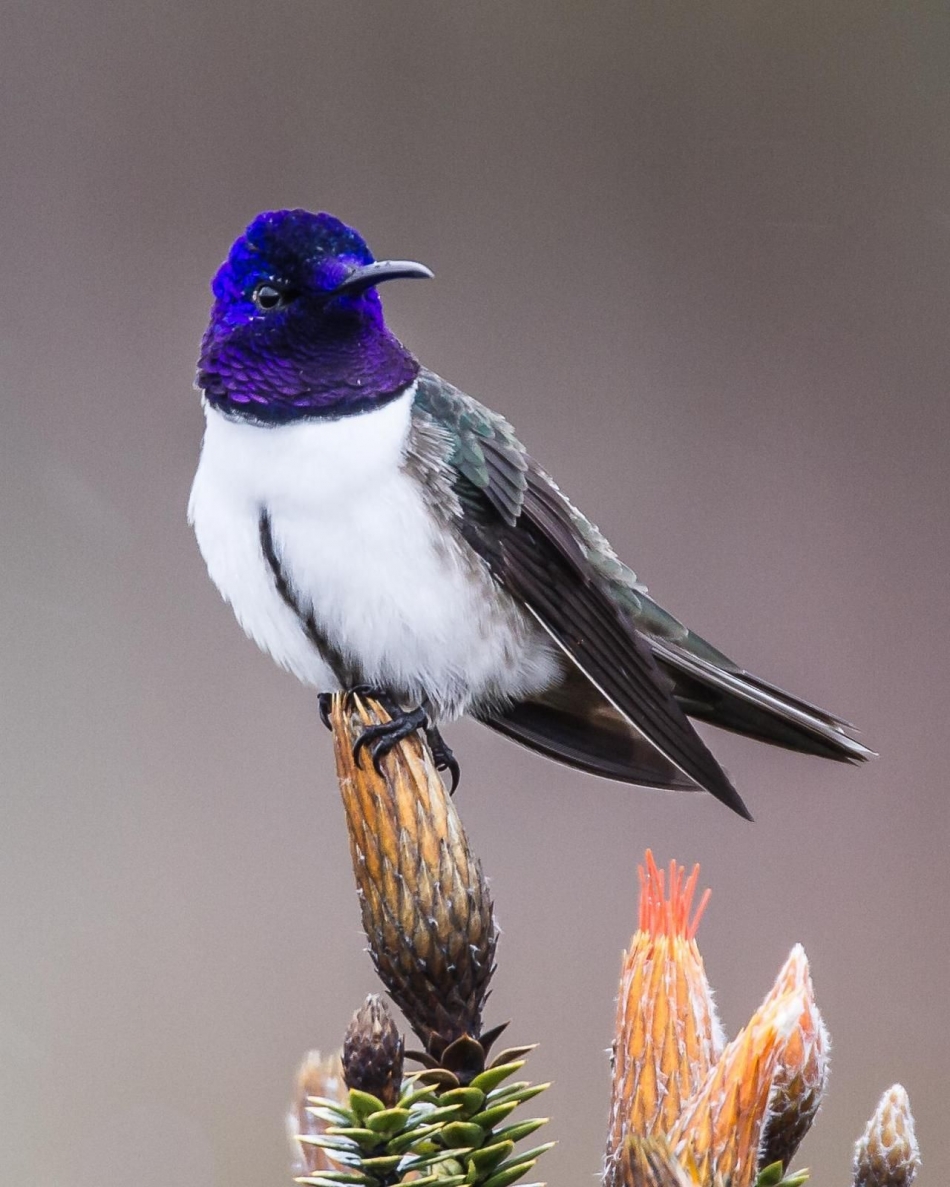
Ecuadorian Hillstar: The Ecuadorian hillstar (Oreotrochilus chimborazo) lives at high altitudes in the Andes, feeding along the slopes right up to the snow line. Because these birds live in such cold areas year-round, they conserve energy by taking shelter in protected roosts and going into torpor (a state of lowered metabolic rate, heart rate, oxygen intake, and body temperature) at night.
12 / 16
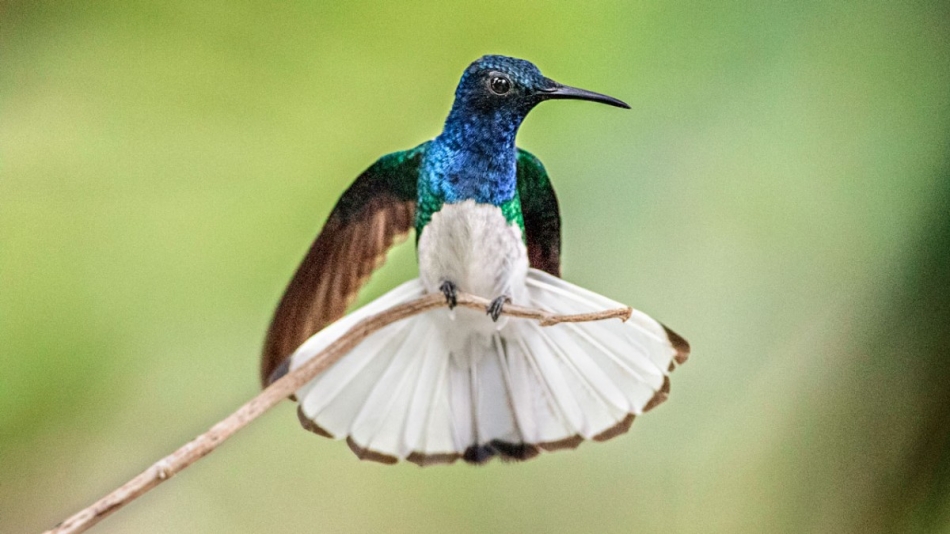
White-Necked Jacobin Hummingbird: It’s hard to miss a male white-necked jacobin hummingbird (Florisuga mellivora), with its bright white belly, majestic tail, and royal blue head. They are found between Mexico and south Brazil, all the way to the Caribbean island of Trinidad and Tobago. Like many hummingbird species, this one feeds not only on nectar and small insects, from which it gets its protein. It catches bug prey by snatching it in mid-air, a technique called “hawking.”
13 / 16
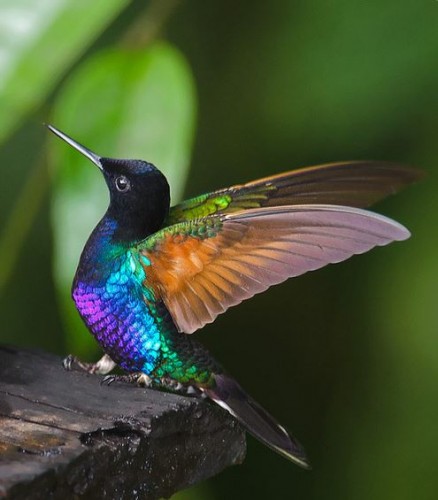
Velvet-Purple Coronet: The velvet-purple coronet (Boissonneaua jardini), native to the humid foothill forests of western Colombia and northwestern Ecuador, has such a rich coloration it may appear black at first, particularly if it’s dark outside. When the light catches its iridescent plumage, though, flashes of vivid purple, blue, and green appear. The underparts of its wings are a contrasting chestnut color.
14 / 16

Green-Throated Mango: The green-throated mango (Anthracothorax viridigula) loves mangrove and swamp forests, and can be found along a narrow strip of the Atlantic Coast along the north and south of the Amazon river outlet. Though there is still much to be discovered about the species, it is known that its Trinidad population is on the decline due to the loss of swamp and mangrove habitat.10 The International Union for Conservation of Nature and Natural Resources still lists it as a species of least concern.
15 / 16
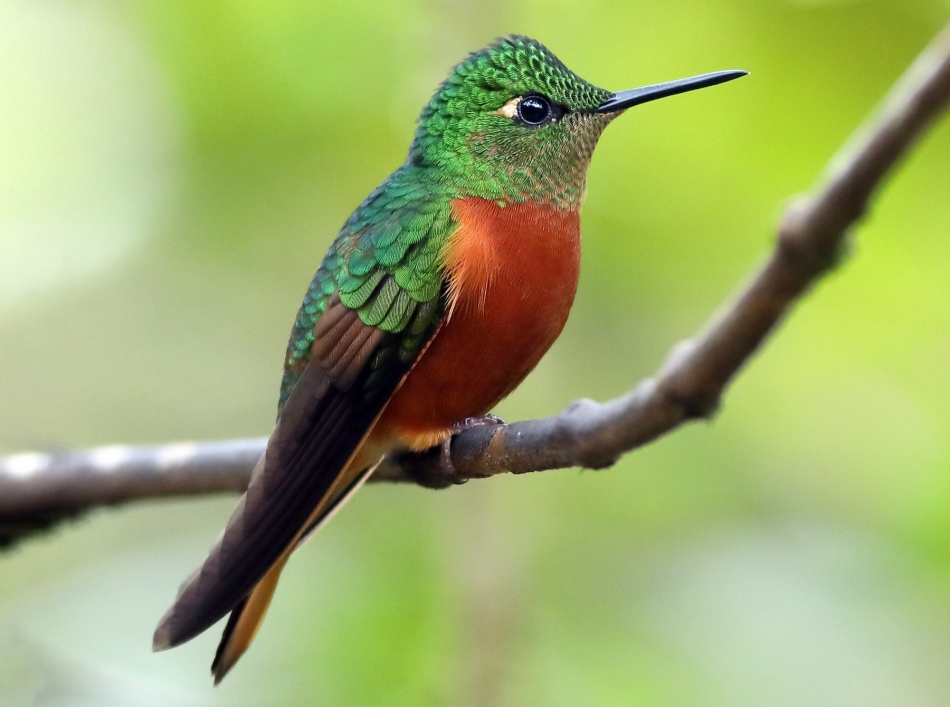
Chestnut-Breasted Coronet: The chestnut-breasted coronet (Boissonneaua matthewsii) is admired for the striking contrast between its rufous-colored underbody and the bright green along its head and back. Its beak is thick and straight. One of its other signature traits, it holds its wings upright over its back immediately after landing on a new perch. The chestnut-breasted coronet can be found on the eastern slopes of the Andes mountains.
16 / 16
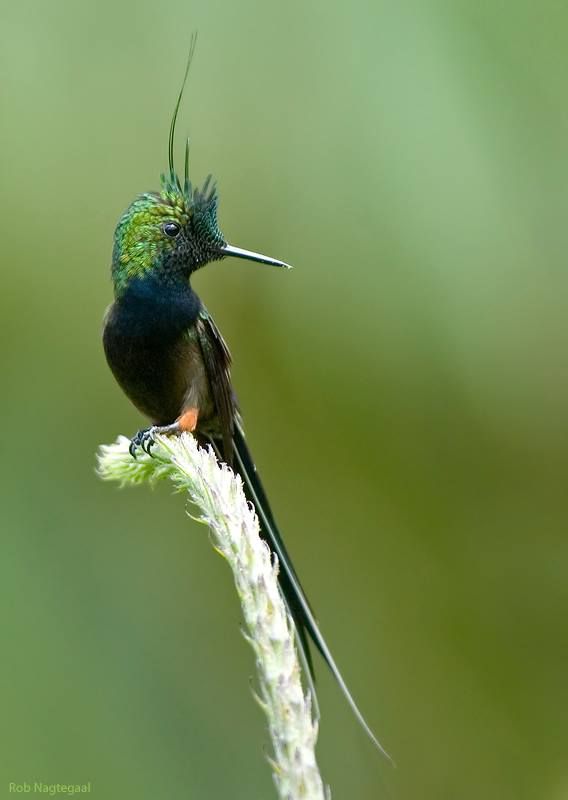
Wire-crested Thorntail: The alien-esque appearance of this hummingbird truly has to be seen to be believed! Its long antenna-like head feathers are balanced out by its spectacularly long tail. They can be seen buzzing around the eastern slope of the Andes.
